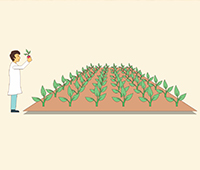据了解,这种食品酶是由转基因米曲霉菌株NZYM-OA生产的,旨在用于各种食品制造过程,以防止丙烯酰胺的形成。
经过评估,专家小组认为,在预期的使用条件下,不能排除饮食暴露引起过敏反应的风险,但这种情况发生的可能性很低。根据所提供的数据,评估小组得出结论,这种食品酶在预期使用条件下不会引起安全问题。部分原文报道如下:
The food enzyme asparaginase (l-asparagine amidohydrolase; EC 3.5.1.1) is produced with the genetically modified microorganism Aspergillus oryzae strain NZYM-OA by Novozymes A/S. The genetic modifications do not give rise to safety concerns. The food enzyme is free from viable cells of the production organism and its DNA. It is intended to be used in various food manufacturing processes to prevent acrylamide formation. Dietary exposure to the food enzyme–total organic solids (TOS) was estimated to be up to 0.051 mg TOS/kg body weight (bw) per day in European populations. Genotoxicity tests did not indicate a safety concern. The systemic toxicity was assessed by means of a repeated dose 90-day oral toxicity study in rats. The Panel identified a no observed adverse effect level of 1,182 mg TOS/kg bw per day, the highest dose tested, which, when compared with the estimated dietary exposure, resulted in a margin of exposure of at least 23,176. A search for the similarity of the amino acid sequence of the food enzyme to known allergens was made and no match was found. The Panel considered that, under the intended conditions of use, the risk of allergic reactions by dietary exposure cannot be excluded, but the likelihood is low. based on the data provided, the Panel concluded that this food enzyme does not give rise to safety concerns, under the intended conditions of use.
本文由食品伙伴网食品资讯中心编辑,有任何疑问,请联系news@foodmate.net。







